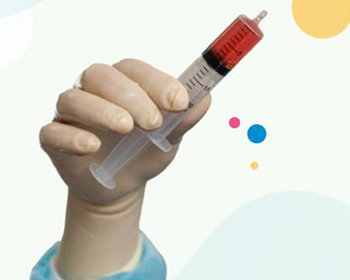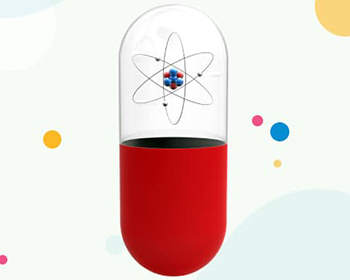Overview
The department of radiation oncology at HCG Manavata Cancer Center has advanced technology in the field of radiation oncology and supports cancer treatments that lead to improved outcomes and come with added advantages like fewer complications, reduced hospitalizations, and lesser treatment time. Some of the best radiation oncologists in Nashik are stationed at HCG Manavata Cancer Center.
HCG Manavata Cancer Center, one of the best radiation oncology hospitals in Nashik, Maharashtra, aims to improve the overall quality of life through state-of-the-art radiation delivery equipment and an experienced, expert, and dedicated team. The patients at the center are provided treatment of cancer through TomoTherapy, Image-guided Radiotherapy (IGRT), VMAT, 2D – Conventional Radiotherapy, 3D – Conformal Radiotherapy (3D CRT), Intensity-modulated Radiotherapy (IMRT), DIBH ( Deep Inspiratory Breath hold technique), ABC ( Active Breathing coordination )Stereotactic Body Radiotherapy (SBRT), Brachytherapy, Stereotactic Radiotherapy (SRT), Stereotactic Radiosurgery (SRS), and palliative radiotherapy. Total bone Marrow irradiation ( TBI/ TMI) before stem cell transplant
Services
Key services offered by the department of radiation oncology include:
- Conventional Radiation Therapy: The facility of conventional radiation therapy is available at HCG Manavata Cancer Center, which allows the delivery of treatment over multiple sessions.
- IGRT: IGRT is a form of radiotherapy technique, which makes use of various imaging techniques during each treatment session in order to ensure that the radiation is precisely delivered to the tumor. One of the main advantages of IGRT is that it reduces damage to nearby healthy tissues.
- IMRT: HCG Manavata Cancer Center also offers intensity-modulated radiation therapy. It conforms to the tumor shape by manipulating proton beams and photons.
- 3DCRT: The facility of 3D- conformal radiation therapy is also available at HCG Manavata Cancer Center, which ensures precise radiation dose calculation, computer-controlled treatment delivery, and computer-optimized treatment planning.
- Adaptive Radiation Therapy: The facility of adaptive radiation therapy allows the oncologists to change the treatment plan according to the change in the functioning of the tumor (such as hypoxia) or alteration in anatomy (weight loss or tumor shrinkage).
- Brachytherapy: It is also called internal radiation therapy. During brachytherapy, the doctor places a radiation source (in the form of beads, needs, or pellets) inside or close to the tumor; this radiation source starts emitting radiation, which kills the cancer cells.
- Intraoperative Radiation Therapy: HCG Manavata Cancer Center also offers intraoperative radiation therapy services. It is used while operating on cancers that are difficult to be treated through surgery alone.
- Total Body Radiation Therapy: Total body radiation therapy is delivered to suppress the immune system in patients who are looking forward to undergoing stem cell transplantation.
Facilities
Key facilities available at the department of radiation oncology are:
- Tomotherapy H: The technology integrates Intensity-modulated Radiation Therapy (IMRT) and Computed Tomography (CT) image guiding technology. It improves accuracy while delivering the radiation therapy at all angles during circular motion.
- Versa HD: This technology has the inbuilt facility of 3D and 2D imaging that allows significant accuracy and precision while delivering radiation therapy. It is designed to deliver advanced radiation therapies, such as stereotactic radiation surgery and stereotactic radiotherapy.
- Radiotherapy with FFF Technology: HCG Manavata Cancer Center uses advanced flattening-filter-free radiation therapy. The advantages of this technology include improved image quality and a high level of accuracy and precision. Highly automated technology reduces human intervention and subsequent errors.
- Volumetric Arc Therapy (VMAT): Advanced radiotherapy techniques continuously deliver the radiotherapy dose during the rotation of the treatment machine. The advantages of this therapy include precise delivery of the radiation dose to the tumor and reduced damage to the healthy tissues.
- APBI (Accelerated Partial Breast Irradiation): It is performed to treat breast cancer. The techniques significantly reduce the duration of treatment. Compared to the whole breast irradiation, which requires around 5-7 weeks of radiotherapy, this technique is used for five days, twice a day after lumpectomy surgery.
- Stereotactic Radiation Surgery and Fractionated Stereotactic Therapy: This radiotherapy is generally used to treat cancers related to the brain. It is less invasive with fewer side effects compared to conventional brain surgery.
- Deep Inspiratory Breath Hold Technique (DIBH) : The method is based on the observation that the heart moves away from the chest wall during inspiration due to the flattening of the diaphragm and expansion of the lungs. The patient inhales deeply and then holds it for a length of time during which radiation is delivered.
- ABC (Active Breathing Coordination): Before the radiation beam is administered using this method, the patient inhales deeply. By taking a deep breath, the patient’s left side breast tissue or chest wall, which will be exposed to radiation, will be further away from the heart.
- Brachytherapy: Brachytherapy. also known as internal beam radiation therapy, is administered within the body as closely as possible to the tumor. Radioisotopes are placed inside in the form seeds, wires or rods to deliver the radiation and destroy tumor cells.
Frequently Asked Questions
1. How radiation therapy treats cancer?
Radiation therapy involves the use of high-energy radiation. When these radiations reach the cancerous cells, the vital components, like the DNA, are destroyed due to heat. It results in the destruction of cancerous cells.
2. Is there any risk of radiation to my family members after my radiotherapy treatment?
No, there would be no risk of radiation after external radiation therapy. However, the doctor may give special instructions if you have received internal radiation or brachytherapy.
3. What are the side effects of radiotherapy?
The side effects of radiotherapy are significantly reduced due to technological advancement. Side effects experienced by patients are site-specific, i.e., they depend on the body part that has received radiation therapy. Those who have received radiation therapy in the head and neck region experience dry mouth, mouth and gum soreness, jaw stiffness, hair loss, nausea, etc. Those who receive radiation therapy in the chest region may experience breathing and swallowing difficulties, shoulder stiffness, cough, and fever. Those who receive radiation therapy in the abdomen region are likely to experience loss of appetite, bowel cramping, nausea and vomiting, and diarrhea.
4. Can radiation therapy be done during pregnancy?
No, radiation therapy is contraindicated in pregnant women. This is because the high-energy radiation may harm the developing fetus.











